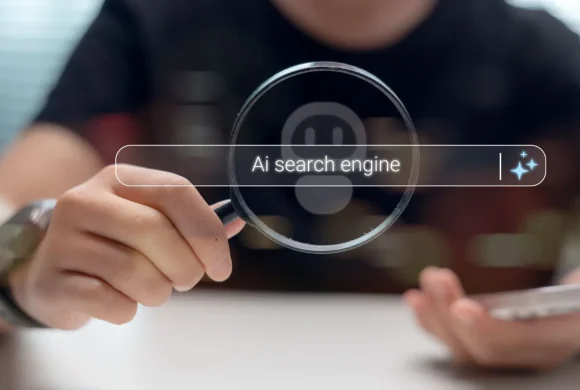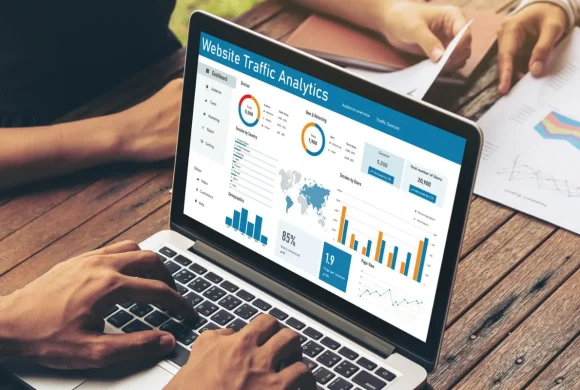Types of B2B Website: Minimal Info or High-Traffic Hub?

A new website is a significant investment in both time and dollars for any business.
Get it right, and the uplift in business can bring a bright smile to your face.
Get it wrong, and the whole exercise can be, at best, a frustrating waste of resources… and, at worst, a massive opportunity loss.
In this article, we explore the two basic types of B2B information websites (minimal info and high-traffic hubs), the advantages and disadvantages of each and the typical investments involved.
We also explain the strategy behind a flexible approach that allows your website to transform from minimal info to high-traffic hub as budget allows.
Minimal Information B2B Websites
Think of minimal information websites like glorified online brochures.
They allow someone who is already interested in your products or services to make a purchase decision or contact you for more information.
The acid test is that you can confidently say ‘take a look at our website‘ and know that potential clients will move closer to a sale.
To achieve this, a minimal information B2B website must be professional and build trust. Must haves include:
What does a Basic B2B Website Cost?
Once you get beyond the core investment in a professionally designed and well-coded site, the rest of the cost comes down to the amount of content on the site.
How much content you need to add depends on what your market demands, what your competitors are doing and your budget.
Your market is the most important of the three.
If you deal in relatively small price tag transactions and work with just one or two decision-makers, then a small 5-page site (e.g. home, about, services/products, case studies/testimonials, contact) might be enough.
But if each transaction is high-value with multiple decision-makers across the purchase, you’ll probably need 20 or more pages, including capability statements, detailed product and service information and case studies to support your sales team as they work through the onboarding process.
Next, look at your competitors.
If they all have appealing, professional, well-designed websites containing superb information… then that’s the bar. You need to do at least as well as them, if not better.
If you’re a smaller player in a big pond, niching is a key strategy that can allow you to penetrate the market.
And finally, budget.
This is a tricky one.
We all know in business that you have to spend money to make money.
Websites under $10,000 are generally a waste of time and represent a missed opportunity because they simply don’t meet the mark in today’s competitive online landscape.
Small SMEs who have strong relationships with key decision-makers can invest in a professional B2B website at around the $10,000 mark and grow forward from there as their budget allows.
More established businesses with a range of services and products talking to a more complex web of decision-makers need to consider an investment of $15,000 as an absolute minimum.

It’s important to understand that basic B2B websites generally don’t rank in free Google search for anything other than your business name and a few low-competition or local terms.
This means you have to do the hard work of driving traffic to them through word of mouth, networking, social media and paid advertising.
High-Traffic B2B Information Hubs
High-traffic B2B information hubs are websites that have high-traffic loads coming from free Google searches.
A good one will generate leads from prospects who were previously unaware that you even existed.
You don’t need me to tell you that this represents a very powerful business tool.
However, like all powerful business tools, a high-traffic information hub comes with a price tag.
The initial website, including strategic planning, design, code, content and SEO, will start at around $15,000 and go up to $30,000 and beyond for larger businesses.
Moving forward, you will need a professional content writer (AI-generated content will fail) and an experienced team with strategic marketing and SEO skills to keep adding more content to your website based on the results and how your business and the market evolve.
Flexibility to Grow
At Brilliant Digital, we pride ourselves on building long-term relationships with our clients across multiple B2B industries.
Many of our clients started out with basic websites, and over time, we worked with them to evolve their websites into powerful information rich traffic hubs that deliver millions of dollars worth of business every year.
Our strategic planning skills allow us to make this change seamlessly for our clients without having to re-code or re-design from scratch.
This is important as it delivers consistency and continuity to the market and delivers the possible best return on investment for our clients.
Meet the author
I’m Deb Croucher, a former veterinary surgeon with a passion for B2B marketing.
In 2008, I permanently traded my stethoscope for SEO after successfully leveraging Google to power my vet business.
Diagnosis and treatment is still part of my day though!
In Brilliant Digital I identify issues, uncover opportunities and formulate strategies that lead to success and longevity.
You can read more B2B marketing articles here. I love to chat so feel free to, drop me a line!

About Deb
Meet the author
Deb Croucher is the founder of Brilliant Digital. She works directly with SME owners to create strategy-led, full-service marketing that delivers, not just in Google, but in the new world of AI-powered discovery.



















